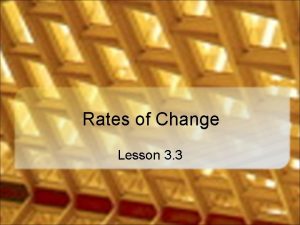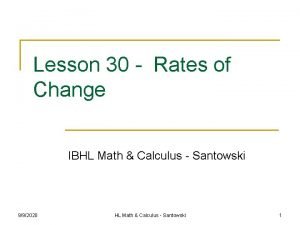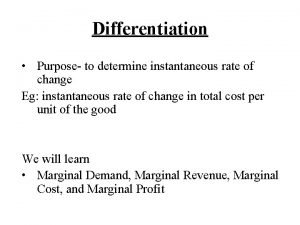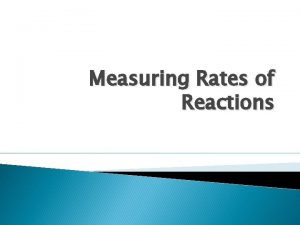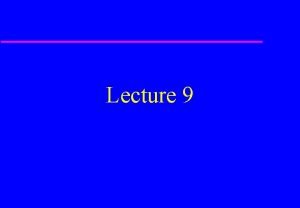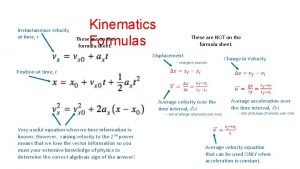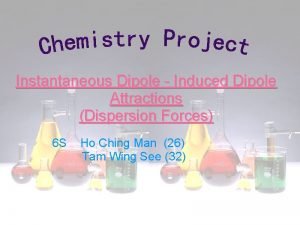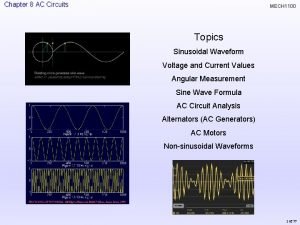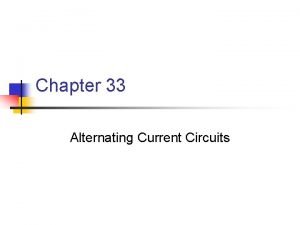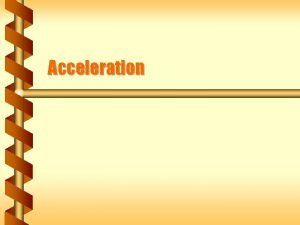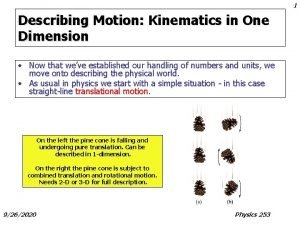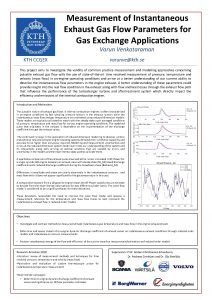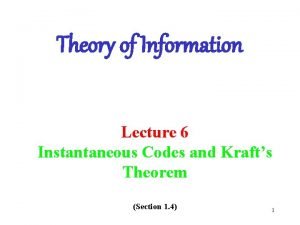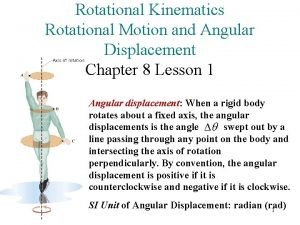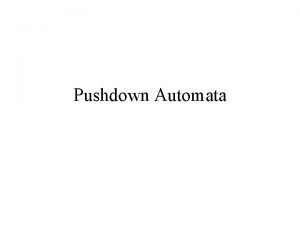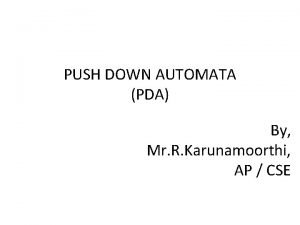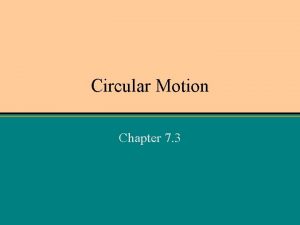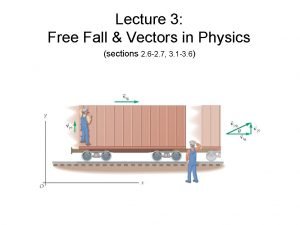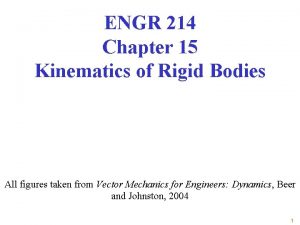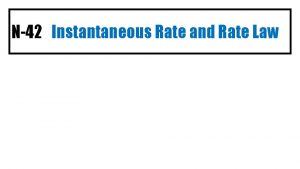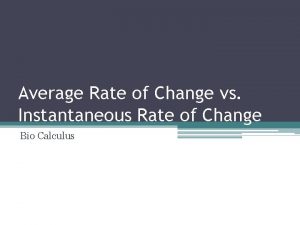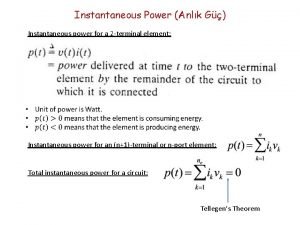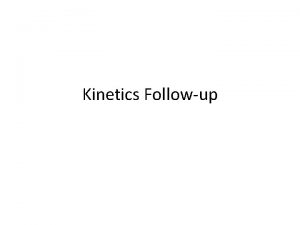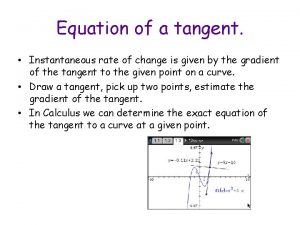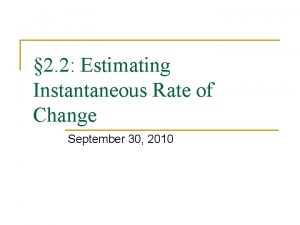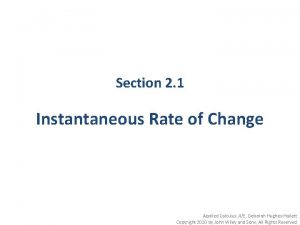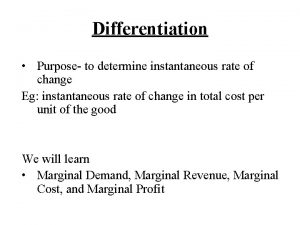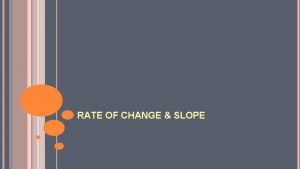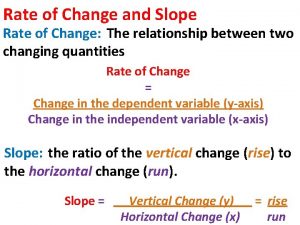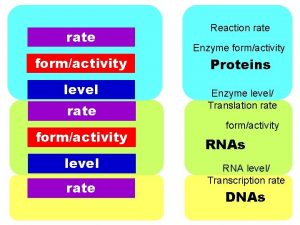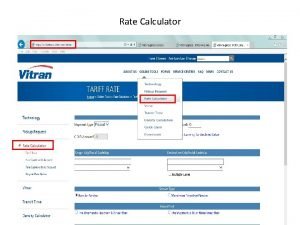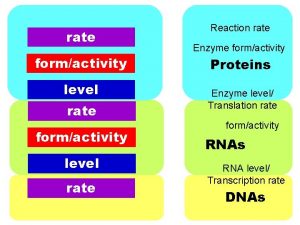Lecture 14 Instantaneous Rate of Change Interpretations Higher






























- Slides: 30

Lecture 14 Instantaneous Rate of Change Interpretations; Higher Order Derivatives

Last Lecture Summary We covered sections 15. 5 and 15. 6: • Differentiation • Rules of Differentiation • Implementation and examples

Today We’ll cover sections 15. 7 and 15. 8: • Instantaneous Rate of Change Interpretations • Second Order, Third Order and Higher Order Derivatives


INSTANTANEOUS-RATE-OF-CHANGE INTERPRETATION •

(a) How far will be object drop 2 seconds? (b) What is the instantaneous velocity of the object at t = 2? (c) What is the velocity of the object at the instant it hits the ground?







This confirms that for an exponential growth function of the form of Eq. (7. 9), k represents the percentage rate of growth. Given that k is a constant, the percentage rate of growth is the same for all values t.





HIGHER-ORDER DERIVATIVES



The following figure illustrates the graphs of f, f’ and f”. The function f is a parabola which is concave down with the vertex at (0, 0). The tangent slope is positive to the left of the vertex but becomes less positive as x approaches 0. To the right of the vertex the tangent slope is negative, becoming more negative (decreasing) as x increases. The graph of f’ indicates the value of the slope at any point on f. Note that values of f’(x) are positive, but becoming less positive, as x approaches 0 from

the left, And f’(x) becomes more and more negative as the value of x becomes more positive. Thus, the graph of f’ is consistent with our observation of the sketch of f.



Third and Higher-Order Derivatives •





Review We covered sections 15. 7 and 15. 8: • Instantaneous Rate of Change Interpretations • Second Order, Third Order and Higher Order Derivatives Finished Chapter 15 • Next time, we’ll start Chapter 16
 Rate of.change formula
Rate of.change formula 30rates review
30rates review Instantaneous vs average rate of change
Instantaneous vs average rate of change Refers to the instantaneous rate of change of profit
Refers to the instantaneous rate of change of profit How to calculate instantaneous rate of reaction
How to calculate instantaneous rate of reaction 01:640:244 lecture notes - lecture 15: plat, idah, farad
01:640:244 lecture notes - lecture 15: plat, idah, farad Far 117 interpretations
Far 117 interpretations Interpretations of moore's law assert that:
Interpretations of moore's law assert that: Starry night analysis
Starry night analysis What are historical interpretations
What are historical interpretations Far part 117
Far part 117 Velocity example pictures
Velocity example pictures Kinematics formulas
Kinematics formulas Induced dipole
Induced dipole Instantaneous velocity formula
Instantaneous velocity formula Instantaneous voltage formula
Instantaneous voltage formula Instantaneous voltage formula
Instantaneous voltage formula Instantaneous acceleration
Instantaneous acceleration Instantaneous velocity vs average velocity
Instantaneous velocity vs average velocity Instantaneous gas flows
Instantaneous gas flows The analysis of ac circuits uses a rotating vector called a
The analysis of ac circuits uses a rotating vector called a Hopcroft ullman
Hopcroft ullman Instantaneousity
Instantaneousity Displacement in uniform circular motion
Displacement in uniform circular motion Instantaneous description of pda
Instantaneous description of pda Pda
Pda Instantaneous velocity circular motion
Instantaneous velocity circular motion Pda state diagram
Pda state diagram Define instantaneous acceleration
Define instantaneous acceleration Curvilinear translation
Curvilinear translation Instantaneous current
Instantaneous current
